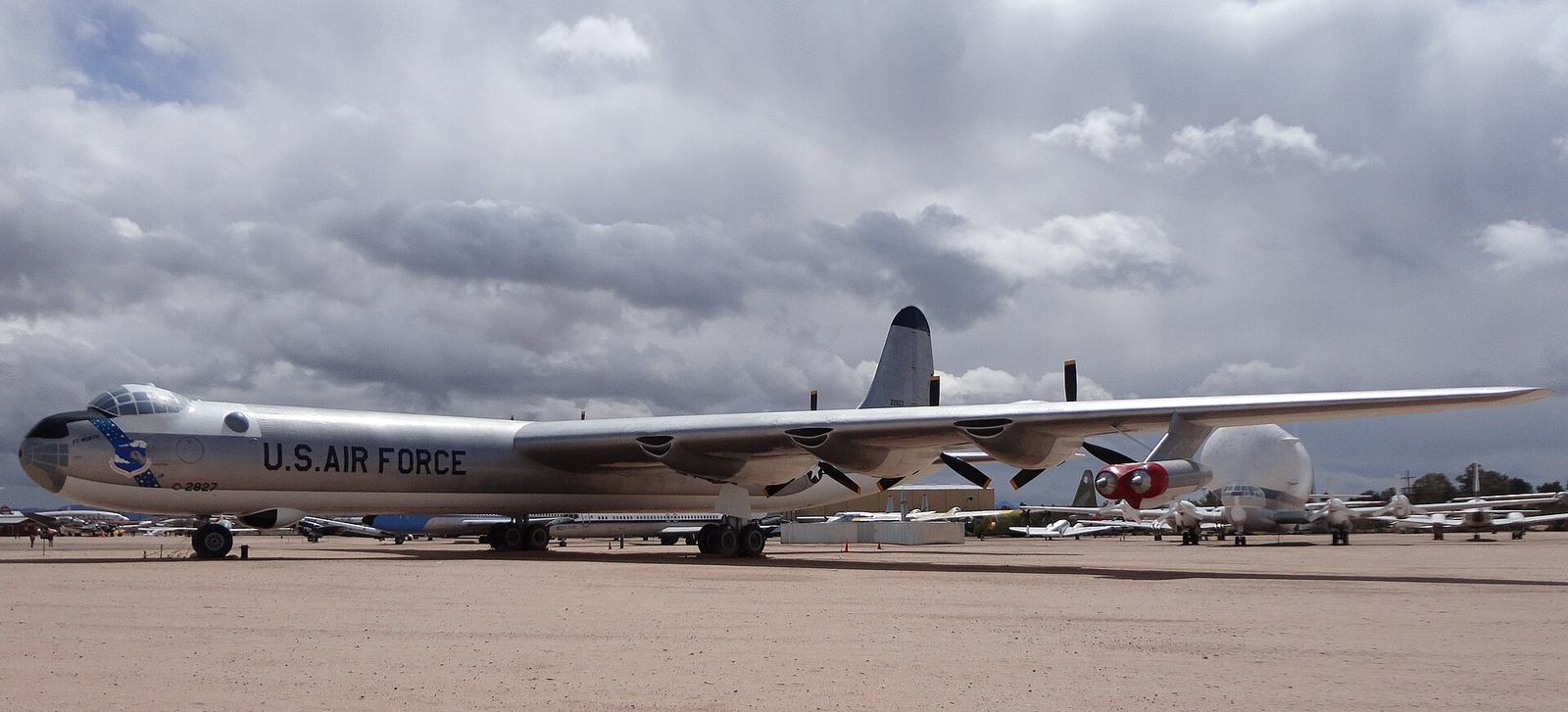
The Convair B-36 Peacemaker remains one of the most awe-inspiring aircraft to ever take flight. A relic of Cold War ambition and engineering prowess, it bridged the technological divide between World War II’s piston-driven bombers and the jet-powered strategic platforms that followed. For over a decade, this massive bomber formed the backbone of America’s Strategic Air Command, shaping long-range bombing doctrine and strategic deterrence alike.

Born from Wartime Necessity
The B-36 was born at the peak of World War II, when American war planners saw the possibility of losing Britain and the necessity for a bomber able to hit deep inside Europe from the United States. The Army Air Corps published a specification in 1942 for an aircraft with a speed higher than 450 mph, a service ceiling of 45,000 feet, and a staggering 12,000-mile range. While these specs were toned down slightly throughout development, the challenge was still daunting.

Building a Giant
Convair (formerly Consolidated Vultee) stepped up to the gargantuan task and created what would be the largest mass-produced piston-engine airplane in history. The B-36 had a 230-foot wingspan and a fuselage measuring 162 feet. Its wing structure was so enormous that crew members were able to crawl through it in mid-flight to access the engines.

The power plant configuration was equally revolutionary. Six Pratt & Whitney R-4360 radial engines, facing rearward, powered the aircraft in a pusher configuration. Subsequent models, beginning with the B-36D, used four J47 jet engines for added thrust, earning the nickname “six-turnin”’, four-burnin’.” These engines enabled the aircraft to fly efficiently at cruise speed or utilize jet power for rapid maneuvers.

Inside, the B-36 contained huge bomb bays with capacities to carry as much as 86,000 pounds of ordnance, including early nuclear ordnance. Early models were equipped with as many as 16 remotely controlled 20mm cannons, though these were phased out over time.

Operational Function and Cold War Significance
Even though it never dropped bombs during combat, the B-36 was a strategic bruiser of its time. It entered military service in 1949 as the Cold War gained momentum, giving the United States an unprecedentedly long-range nuclear delivery capability. At flight levels above Soviet fighters of the time, the B-36 played a vital role in projecting deterrence.

Its mission was typically high-stakes training and preparation exercises. The mere presence of the aircraft, with the potential to deliver a nuclear strike from halfway across the globe, was already a geopolitical statement in itself. It was able to carry massive atomic and hydrogen bombs, like the 42,000-pound Mark 16, to add to its strategic weight.

The Nuclear Experiment: NB-36H
Perhaps the most brazen chapter in the life of the B-36 was the NB-36H, an airborne nuclear reactor experimental testbed. During the 1950s, American engineers developed the idea of a nuclear-powered bomber that could stay aloft for weeks.

The NB-36H contained an operational 1-megawatt reactor in a highly shielded compartment. The pilots flew in a lead-lined cockpit that protected them from the radiation. Between 1955 and 1957, the NB-36H conducted 47 test flights to prove the functioning of the reactor and the radiation shielding, though the reactor did not power the engines. The concept was eventually abandoned on the grounds of safety concerns, but the experiments paved the way for future reactor-based research.

Life Onboard and Technical Information
The crew of a B-36 was typically 15 and included pilots, navigators, engineers, and gunners. As individual missions tended to take more than 30 hours, the aircraft was equipped with bunk beds, a galley, and even a dining room located within its pressurized compartments.

Performance, the B-36 possessed a top range of some 10,000 miles, a service ceiling of some 50,000 feet, and a top speed of as much as 435 mph with its jet engines operating. Its payload and range, size, all combined to make it a wonder, one with faults, nonetheless.

Challenges and Retirement
For all its accomplishments, however, the B-36 was limited. Its size and complexity made maintenance problematic. Its piston engines deteriorated, and its relatively low top speed made it an easy target for the next generation of Soviet jet interceptors. It could not also air refuel, which was a major weakness now that global missions were routine.

By the middle of the 1950s, the jet-powered B-52 Stratofortress offered greater performance, and the B-36 was phased out incrementally. Production ended in 1954, and the final unit retired in 1959.

A Lasting Symbol
Now, only four B-36 airframes survive, preserved in museums as a testament to a fleeting moment in aviation history. Though its career in flight was relatively brief, the B-36 established the precedent for America’s future long-range bombers and reaffirmed the principles of nuclear deterrence at one of history’s most fraught moments.

With its vast wingspan, combined powerplants, and Cold War mystique, the B-36 remains a tribute to American ambition, imagination, and airpower at its most brazen.
